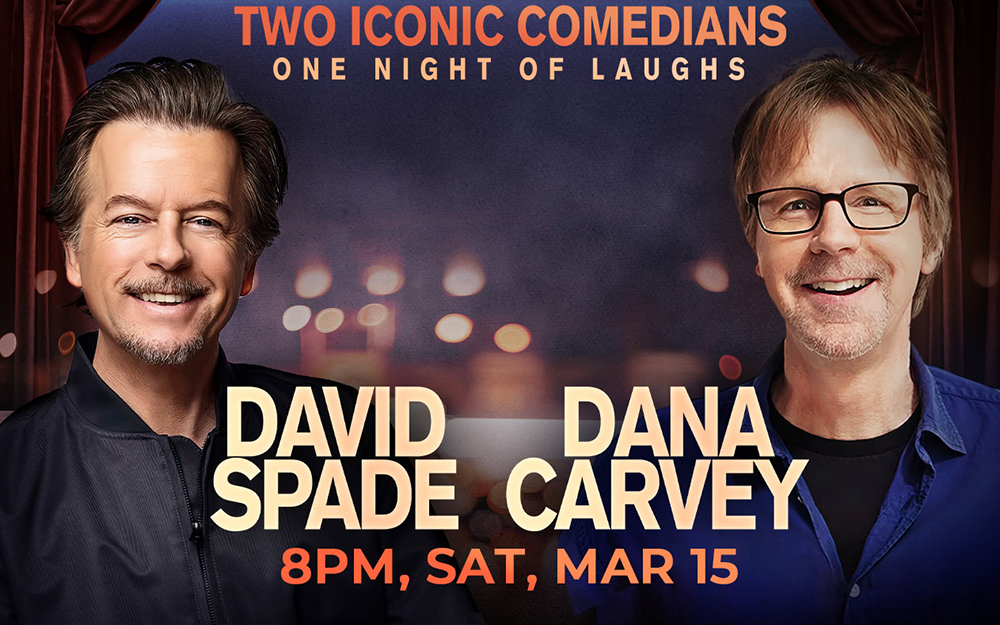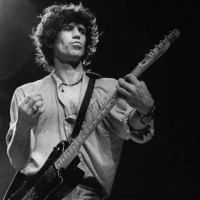
By Eleni P. Austin
Look up the term “Rock & Roll” in the dictionary, and chances are, you will see a picture of Keith Richards. Although Chuck Berry and Little Richard are commonly acknowledged as architects of Rock & Roll, Keith Richards is its heart and soul. He has been making music for more than half a century, and he has yet to slow down.
Keith was born in Dartford Kent, England, in late 1943, the only child of Doris and Herbert Richards. His maternal grandfather, Augustus Theodore Dupree, toured with Jazz bands and sparked his early interest in music.
His mother gave him his first guitar and he taught himself to play, listening to records by Billie Holiday, Duke Ellington and Louis Armstrong. During a brief angelic period, Keith was a boy soprano for his school choir. His first official music gig was at Westminster Abbey, performing for Queen Elizabeth.
Keith reached his teen years as Rock & Roll exploded. He was immediately enthralled by the Rhythm & Blues sounds emanating from America. Elvis Presley’s guitarist, Scotty Moore, was an also an early inspiration.
Expelled from school for persistent truancy, Keith took refuge at Sidcup Art College. Ignoring his curriculum, his only goal for matriculation was learning all of Chuck Berry’s guitar solos.
In 1960, a chance meeting with Mick Jagger in a Dartford railway station changed both of their lives. The boys had been friends and neighbors as children until the Jagger family moved away.
As they exchanged pleasantries, Keith noticed that Mick was carrying a stack of American Blues records. Not only did the pair share an affinity for Chuck Berry and Little Richard, but both had begun to explore more obscure Blues musicians like Elmore James and Big Bill Broonzy.
Mick had just started singing in nascent combos, obviously the next step was to form a band with Keith. The Blue Boys originally included Dick Taylor, (later of the Pretty Things). By 1962, they were trying to secure a gig at the Ealing Jazz Club when they met guitarist, Brian Jones. The 20 year old was sitting in with Alexis Korner’s Blues Incorporated. Something of a musical savant, Jones could pick up any instrument and play it expertly.
After a brief apprenticeship with Korner, Jagger, Jones and Richards’ struck out on their own. They added bassist Bill Wyman to the line-up and Ian Stewart on keys, and actually poached drummer Charlie Watts from Blues Incorporated. Dick Taylor left in early 1963.
By the time Andrew Loog-Oldham became their manager, the Blue Boys had morphed into the Rolling Stones, named for a favorite Muddy Waters track. Their manager trimmed the line-up to a five-piece, determining that Ian Stewart looked too old for the band. Relegated to roadie, Ian remained the unofficial sixth member, adding keys to their records until he died in 1985.
At the dawn of 1963, they secured a weekly residence at Giorgio Gomelesky’s Crawdaddy Club. Initially, their set-lists consisted of American R&B covers. But they quickly gained a loyal following. Looking for an angle, Andrew Loog-Oldham encouraged the British press to manufacture a good-natured rivalry between the Beatles and the Rolling Stones.
The Stones’ appearance, spotty complected and somewhat feral, seemed more dangerous than the relatively clean-cut Beatles. Provocative headlines like “Would You Let Your Daughter Marry A Rolling Stone” sought to burnish their outlier/outlaw image. Rather ironic, considering the Stones’ middle-class backgrounds.
Signed to Decca Records, (who had passed on the Beatles a couple of years before), their debut arrived in early 1964, just as Beatlemania was hitting America. Unlike Lennon and McCartney, the Stones didn’t begin composing their own songs until Loog-Oldham rather famously locked Jagger and Richards in a room and they wrote “As Tears Go By.”
After that the band was off and running. Coming up with a riff in his sleep, Keith quickly captured it on a primitive cassette recorder. A series of fuzz-toned chords, the opening notes of “(I Can’t Get No) Satisfaction,” is probably the most recognizable opening riff in music history. The Stones spent the remainder of the ‘60s jockeying with the Beatles for the top spots on the charts.
Self-proclaimed the “World’s Greatest Rock & Roll Band,” it wasn’t an empty boast. The lethal combination of Brian’s adroit musicianship, Mick’s snarling androgyny, Keith’s instantly infectious
rhythm riffs and the taut time-keeping of Bill and Charlie defined their sound. But by 1969, Brian Jones had become a drug casualty, forced out of the rest of the band. A week before new guitarist Mick Taylor’s first official performance, Jones died in an accidental drowning.
Keith was already living the life of an outspoken outlaw. Intense scrutiny from the British authorities had already briefly landed Keith and Mick in jail on trumped-up drug charges But the band continued world domination, releasing certified classics like Let It Bleed, Sticky Fingers and Exile On Main St.
Throughout the ‘70s, Keith seemed to be on a crusade to rid the world of heroin and cocaine, (one syringe and line at a time). Remarkably, this “avocation” did little to slow the Stones’ creativity and momentum. The rampant hedonism proved too much for Mick Taylor and he quit in 1976, replaced by ex-Faces guitarist, Ronnie Wood.
Keith’s luck couldn’t hold out forever, in 1977, Canadian authorities busted him for “possession of heroin for the purpose of trafficking.” He was only allowed to leave the country to seek treatment for heroin addiction.
The Stones wrote, recorded and began touring behind Some Girls, (ironically, their most successful album to date). In the midst of all this Keith went on trial. He pleaded guilty to possession, and was given a suspended sentence and probation.
Of course, Keith Richards remained the seditious reprobate. Abandoning his synthetic substances, he switched to grain alcohol. Rock & Roll’s most notorious gunslinger would never walk the straight and narrow.
As the “Me Decade” gave way to the “Greed Decade” the Stones kept rolling. Albums like Emotional Rescue and Tattoo You were perched at the top of the charts. As the first band to accept corporate sponsorship to offset the cost of touring, they ensured enormous paydays and changed the music business.
But the Stones were beginning to show some wear. The cracks began to show with their 1983 album, Undercover. Mick was desperate to remain au courant to the MTV generation, while Keith was content to mine the Blues-Rock formula they had sort of invented 30 years before.
The cover of 1986’s Dirty Work made it obvious that Mick had won the battle, the band is swathed in day-glo outfits that seemed left over from an a-ha video shoot. The music was slick, but tepid, aping the synthesized sounds of the day. Had Mick chosen to tour behind this album of castrati-rock Keith might have obliged. But Mick opted to record a second solo album and embark on a solo tour.
Thoroughly pissed off, Keith waged a full-on feud with “Brenda,” (his snotty nickname for Mick). He even took his grievances to the press. Rather than sit on his hands as Mick flailed through a sparsely attended solo tour, Keith decided it was time to cultivate his own solo career.
He had met drummer Steve Jordan a few years earlier at a recording session. Steve began his career playing in the Saturday Night Live house band and from 1982-1986, in David Letterman’s Late Night band. The pair hit it off and Keith asked him to anchor the band he put together for the Chuck Berry tribute movie “Hail! Hail! Rock n’ Roll.” Their collaboration evolved from a natural kinship.
Keith’s declaration of independence, Talk Is Cheap arrived in late 1988. He dubbed his band, which included Waddy Wachtel (guitar), Charley Drayton (bass) and Ivan Neville (keys), the X-Pensive Winos and actually went on tour.
Critical praise was unanimous. Stripped-down, wicked and slightly sentimental, Talk Is Cheap, was half-jokingly referred to as the best Rolling Stones album in years. It could have meant the end of the band, but instead, it fostered rapprochement between the Glimmer Twins.
By 1989, the Stones were back, and they’ve never really gone away. Even though a second solo album, Main Offender appeared in 1992, Keith put his solo career on the back-burner.
The ‘90s and 2000s have seen mega-tours punctuated by occasional studio albums (in 1994, 1997 and 2005, respectively). Plenty of live collections, grand career retrospectives and reissues have been released as the band celebrated their 40th and 50th anniversaries. But it’s been 10 years since the Stones went into the studio with new material. Keith wrote a candid autobiography, “Life” and was actually considering a form of retirement.
Luckily, Steve Jordan persuaded him to re-think his plans. Instead, he got him to come to the studio on a weekly basis as a way to keep his skills sharp. The duo began writing, with Keith playing a plethora of instruments on each track. The result is Crosseyed Heart, his first solo album in 13 years.
The album opens with the title track, a bluesy (unfinished), sketch that spotlights Keith’s whisky-soaked rasp and acoustic guitar. It never strays too far from his original Delta Blues inspirations.
The record properly kicks into gear with “Heartstopper.” The song is powered by a walloping backbeat, Keith’s trademark slash and burn riff-age and percolating piano fills. The lyrics play on the old “opposites attract” paradigm; “She’s a vegetarian, but me I love my meat/She likes it when it’s cool, but I just love the heat.” But really, he is paying homage to his longtime marriage in a style that is equal parts cranky and heartfelt.
Several tracks offer a lesson in “Keith 101.” “Amnesia” is built around a tick-tock beat, chunky rhythm guitar, pliant piano notes, scorching lead guitar licks and scratchy but soulful vocals. Cresting over the top is a honking sax solo from Keith’s compadre, Bobby Keys. (A partner in many a mis-adventure, Keys passed away not long after these sessions were completed).
Shot through with Memphis Soul, “Nothing On Me” blends sweet sunburst guitar licks, a sly, stop-start rhythm and Hammond B3 colors. Keith remains the unrepentant outlaw; “You know they watch me like a hawk, yeah they even took me for a walk/You know they tried to make me squawk, but they got nothing on me.”
“Blues In The Morning” finds him moanin’ the billionaire’s blues. A shambolic shuffle accented by Bobby Keys’ blowsy sax, barrelhouse piano runs and his shang-a-lang riffs, the melody shares some musical DNA with Jerry Lee Lewis’ “Whole Lotta Shakin’ Goin’ On.” Keith’s unconcerned, revealing “got the blues in the morning, but baby they don’t last too long/I don’t care cause I’m a billionaire.”
On “Something For Nothing” Keith gets a celestial vocal assist from the Harlem Gospel Choir. Fueled by a rollicking rhythm, stuttery power chords and plinking piano notes, the lyrics offer a cryptic and cautionary note against gambling.
The softer side of Keith is on full display with “Robbed Blind” and “Suspicious.” The former is a tender, Country-tinged ballad of romantic betrayal. Anchored by acoustic guitar and high lonesome pedal steel, Keith’s delicate croon almost camouflages his veiled murder confession. “The cops,” he confides, “I can’t involve them.”
The latter is a slow-cooked soul groover. Handling acoustic and electric guitars, bass, piano, electric sitar, Wurlitzer and farfisa organ himself Keith manages to bare his soul but still guard against heart break.
On his first solo album, Keith took Mick to task, (much as John Lennon excoriated Paul McCartney on “How Do You Sleep,”) with the dismissive “You Don’t Move Me.” Mick is obviously still on his mind on two tracks, “Trouble” and “Just A Gift.”
On “Trouble,” a crackling, hopscotch meter connects with sinewy guitar chords and thrumming bass lines. Here, a kinder, gentler Keith lightly reproaches Mick but still pledges his loyalty; “Now you’re out of circulation, out of reach and out of touch/Let me keep you in the loop, though I can’t tell you much.”
With the ramshackle “Just A Gift” he reminds Mick “my address hasn’t changed and I’m still the same.” Ironically, these two tracks are Keith at his Stonesy-est.
Other interesting tracks include “Illusion,” a tart duet with Norah Jones. Keith demonstrates his affinity for Reggae and Folk-Blues on two covers. His take on Gregory Isaacs’ “Love Overdue” locks into an easy skank riddim. “Goodnight Irene,” originally written by Huddie “Leadbelly” Ledbetter, is hushed and reverent.
The album closes with “Lover’s Plea,” Co-written with Steve Jordan and Isaac Hayes’ old songwriting partner, David Porter. The track feels like a long lost treasure from the Stax-Volt era. Here, Keith convincingly switches gears from rebel curmudgeon to soulful balladeer.
Will this be final Rolling Stone statement? Or will it serve as a catalyst for “Brenda” and the erstwhile (septuagenarian) Blue Boys to get back into the studio one more time? These days, time isn’t exactly on their side. Either way, Crosseyed Heart proves that Keith’s heart still beats for Rock and Roll.












































